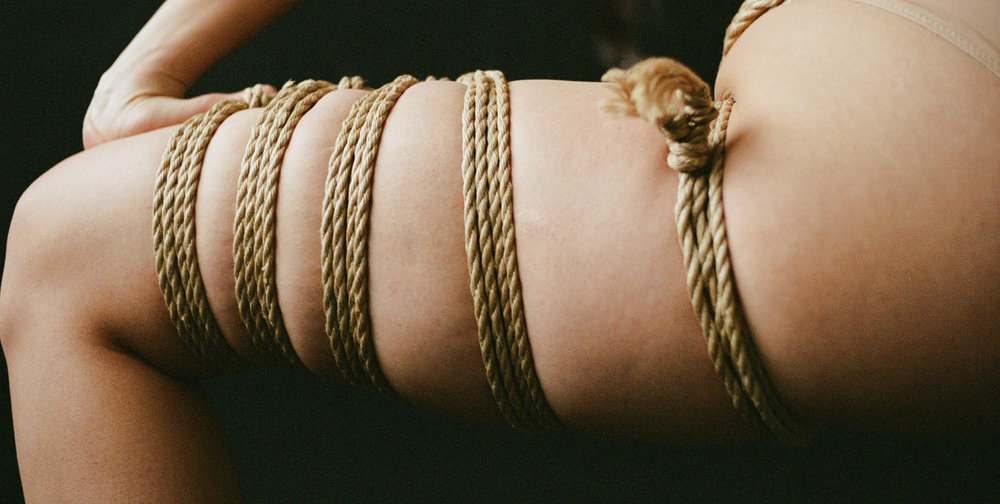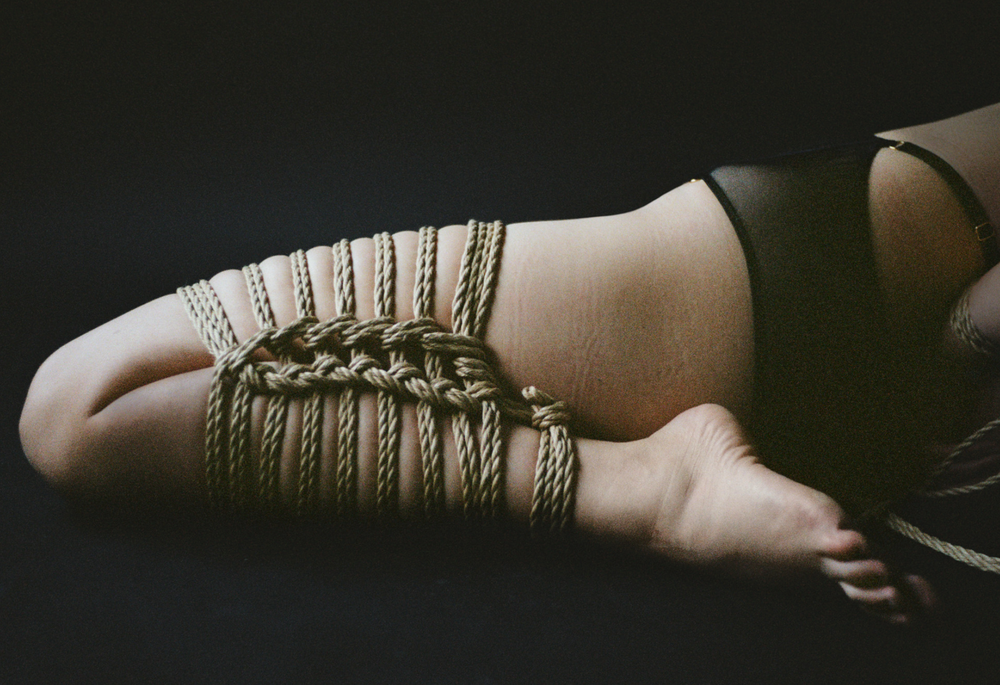
06.09.23
The Art of Shibari
An intimate evening with Shibari artist Anastasia Afanaseva — Unveil the hidden world of Shibari through the eyes of artist Afanaseva as she showcases her extraordinary talent in the art of Shibari, delving into her personal relationship with an ancient practice.

(In Intimate Conversation)
06.09.23
THE ART OR SHIBARI An intimate evening with Shibari artist Anastasia Afanaseva — Unveil the hidden world of Shibari through the eyes of artist Afanaseva as she showcases her extraordinary talent in the art of Shibari, delving into her personal relationship with an ancient practice.
How did you first become interested in Shibari as an art form?
I found out about shibari in 9th grade when I had been studying Japanese. Initially the practice didn’t attract me as I was too young to understand and appreciate it. After graduating from high school I became interested in photography and started to organize my first photo shoots. I had focused on the body and wanted to transform it somehow; to capture in a more unique, sensual and original way. I thought of shibari and that it may could work for me. I found kinbaku (Kinbaku-bi literally translates as “the beauty of tight binding”) so aesthetically pleasing and mysterious that once I tried it I could never stop practicing. It’s not only about beautiful photos — it's about trust, communication, new experiences and the sensations behind it.
Can you explain the basic techniques of Shibari and how they are used to create a beautiful and erotic experience for the model?
Almost every tie starts from the basic knot, such as a “single-column tie” or “Somerville bowline”. After that everything is based on the varying tension and friction of the ropes. You can try traditional ties that have particular rules to follow or experiment and create some chaotic ties which I personally really like. With time, I understood which ties and poses were more suitable for a particular person to demonstrate their inner state. I like to improvise — sometimes tying not only the person, but the furniture or trees if I feel that this can compliment the atmosphere of the photo shoot.

How does Shibari differ from other forms of bondage and what makes it unique?
In shibari you can use only specific kinds of rope; jute, hemp or cotton are the most common ones, while other forms of bondage (handcuffs, tape, ties) are suitable as well. Also, shibari isn’t only about restrictions — there is a high level of trust, visual aesthetic, emotional and psychological connection — so this practice is more multifaceted than others.
Can you talk about the role of trust and communication between the artist and the model in the Shibari experience?
I think all practices that contain restrictions require a very high level of trust and communication. For me, these aspects are the most important. When such fundamental things are not respected both the model and the master can’t immerse themselves in the process and would be constantly stressed during the practice. Communication is a vital element because without it, both roles wouldn’t recognize if something is going wrong to prevent any injury, so the artist needs to be attentive, able to read facial expressions.




(POSE Fisherman Harness)
" Shibari Intensifies the senses both of the model and the rigger - the model usually experiences a euphoric trance-like state while the rigger feels an adrenaline rush."



(POSE Futomomo)
How do you balance the erotic and artistic aspects of Shibari in your work?
Shibari is really unique, sensual, multifaceted and high level aesthetic practice. So, I think everybody who ties can express themselves by experimenting with different harnesses, dynamics and atmosphere of the session. As a photographer, at the begining, I was more focused on the visual part of shibari, but gradually I discovered many aspects including sensuality and intimacy. How intimate the practice will be depends on the purpose of it. On larger photoshoots I tend to focus more on the visual aspect. However, if it’s a more private photo shoot and I’m alone with a model, I may ask about her preferences and tie accordingly. Also the music plays a major role for me, I have several playlists which differ in genres and tempo that assist in creating atmosphere and shapes.
For some, Shibari looks like torture for the person receiving it. However, it has been said that this is a space of surrender and care. Can you talk about the emotional and psychological effects of Shibari on both the model and artist?
Shibari can be really different depending on each person’s preferences - it might be a really soft and gentle session or intense and provocative. But regardless of the session's intensity, people need time to transition after play, so aftercare is profoundly important. This step will help to develop closer bonds and improve emotional connection between the artist/rigger and model or two intimate partners. Shibari intensifies the senses both of the model and the rigger - the model usually experiences a uphoric trance-like state while the rigger feels an adrenaline rush. Also, this experience helps to release emotional blocks through intense feelings and may work as a form of meditation. Sometimes people enter the state of flow in this practice which allows deep and fluid communication with a partner.


What advice do you have for anyone interested in exploring Shibari, either as a model, intimate couple or an artist/rigger?
Of course, at the beginning you should get familiar with the basics and don’t start with suspensions! I would recommend to take private or group classes with an experienced shibari master to learn everything step-by-step. Also don’t over complicate the harnesses.
If you are more into private, intimate shibari sessions, don’t forget to discuss your preference and limits with your partner, so that your practice can be safe and pleasant for both of you.
If you see yourself as an artist, I would recommend to experiment with shibari as much as you can after learning basic ties and understanding how the safety works.
Lastly, could you list the names of the poses you showcased in our Shibari shoot?
Firstly, I did the suspension with a hip harness which actually doesn’t have a particular name but sometimes it's called “bones and ropes”. Also I added an arm-free, very aesthetic tie on the chest. I wanted to give the model an opportunity to hold the rope in her hands that connected to her leg, so she could control the backbend by herself.
Secondly, I decided to combine two very classic but still beautiful ties - Takate Kote (TK) using 3 ropes and futomomo with slight changes.
Thirdly, I tied a harness with hands in front and wrists up, which can be called “fisherman harness” or “front prayer” depending on the position of the wrists and palms inside. This harness is really supportive and sustainable and a lot safer that a classic TK.
And finally I added “basket tie” on the hips to create half suspension which I find very elegant in combination with arms.

(POSE Takate Kote)



















